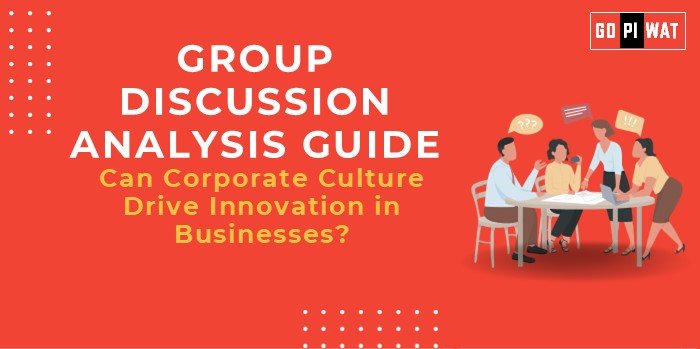📋 Can Corporate Culture Drive Innovation in Businesses?
🌐 Introduction to the Topic
Corporate culture plays a pivotal role in shaping an organization’s ability to innovate. While some companies like Google and Amazon thrive on their innovation-driven cultures, others struggle to align their organizational values with creativity. For B-school aspirants, understanding this interplay between culture and innovation provides critical insights into leadership, strategy, and management practices.
📖 Topic Background
The concept of “corporate culture” refers to shared values, beliefs, and behaviors that influence a company’s operations. As the global business environment demands agility and continuous innovation, fostering the right culture becomes a strategic priority.
📊 Quick Facts and Key Statistics
- 📈 70% of executives believe that corporate culture is critical to innovation (McKinsey, 2023).
- 🔍 Only 37% of companies are aligned culturally for innovation (BCG Report, 2023).
- 💡 3M Innovation Culture: Known for the “15% rule” where employees spend time on personal projects, resulting in products like Post-its.
- 🚀 Amazon’s Culture: “Customer obsession” and risk-taking foster continuous breakthroughs like AWS and Alexa.
👥 Stakeholders and Their Roles
- 👔 Leadership Teams: Set the vision and values that drive innovation.
- 👩💻 Employees: The lifeblood of innovation; need empowerment and autonomy.
- 💼 Investors: Demand returns but must allow innovation cycles to mature.
- ⚔️ Competitors: Push companies to innovate to maintain a competitive edge.
🏆 Achievements and Challenges
🌟 Achievements
- 🔍 Google’s ‘20% Rule’: Encourages employees to spend time on passion projects; led to Gmail and Google Maps.
- ⚡ Tesla: Elon Musk’s innovation-first approach drives electric vehicle breakthroughs.
- 💊 Pfizer and Moderna: Collaborative, innovation-driven cultures produced COVID-19 vaccines at record speed.
⚠️ Challenges
- ❌ Risk Aversion: Companies fearing failure stifle creativity.
- 🏢 Hierarchy Issues: Rigid structures discourage idea flow and innovation.
- 🌍 Global Comparison: Scandinavian countries like Sweden lead in corporate innovation culture due to flatter hierarchies and trust-based systems.
📚 Case Study
💡 Microsoft’s Turnaround Under Satya Nadella: Focused on “growth mindset” and collaboration, driving significant innovation in cloud computing and AI.
🗣️ Structured Arguments for Discussion
- ✅ Supporting Stance: “A positive corporate culture empowers employees to experiment and drives innovation, as seen in Google’s or 3M’s policies.”
- ❌ Opposing Stance: “Culture alone cannot drive innovation; it requires strategy, talent, and financial investments.”
- ⚖️ Balanced Perspective: “While corporate culture is vital for innovation, it must align with processes, leadership commitment, and strategic goals.”
💡 Effective Discussion Approaches
📌 Opening Approaches
- 💬 “Companies like Google prove that fostering a supportive and flexible culture sparks transformative innovation.”
- 📊 “Statistics show that most innovative companies have values like autonomy and risk tolerance embedded into their cultures.”
↔️ Counter-Argument Handling
“Culture alone may not guarantee innovation, but without it, even talented teams fail to deliver transformative results.”
📋 Strategic Analysis of Strengths and Weaknesses
📊 SWOT Analysis
- 💪 Strengths: Encourages creativity, enhances employee engagement.
- ⚠️ Weaknesses: Risk of unproductive experiments, high resource dependency.
- 🌟 Opportunities: Integrating AI/ML for innovation management.
- 🚧 Threats: Competitive pressure, culture clashes in mergers and acquisitions.
🎓 Connecting with B-School Applications
- 📂 Real-World Applications: Analyze how corporate culture impacts innovation strategy during internships or consulting projects.
- 💡 Sample Interview Questions:
- ❓ “How can leadership shape a company’s culture for innovation?”
- ❓ “Why do hierarchical organizations struggle with innovation?”
- 📖 Insights for B-School Students: Innovation requires blending organizational culture with strategic vision, leadership, and measurable outcomes.


